World of Wasted potential: The main problems with World of Warcraft right now
World of Warcraft is one of the most profitable games in history, but it's undeniably in decline.
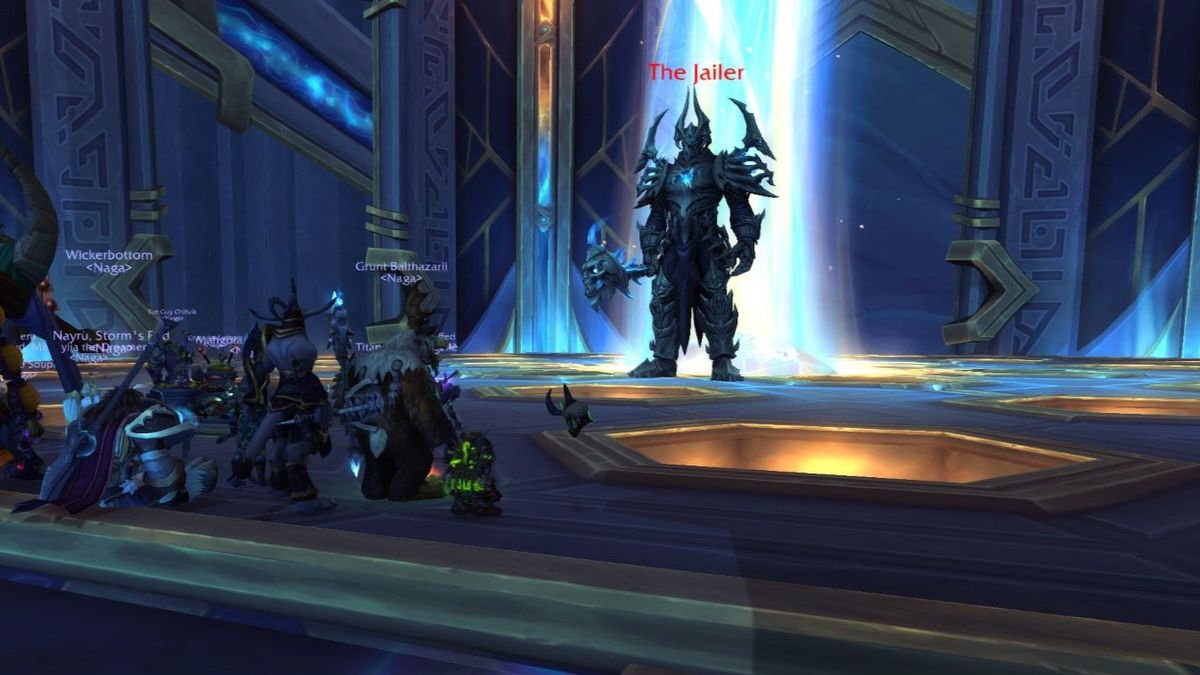
Faced with rampant lawsuits and poor exec decisions, Activision Blizzard has started hemorrhaging players and key talent across its games and development teams. One of the publisher's central pillars remains World of Warcraft, which remains one of the most profitable games in history, owing to its subscription service. The game is nowhere near as big as it once was, becoming something of a pop culture phenomenon in decades past. As the game enters its 18th year in operation, it still enjoys millions of players, and with the possibility of a Microsoft acquisition looming on the horizon, there are reasons to be optimistic about the game's future.
Activision's shareholder culture demands perpetual profits while perpetually cutting costs. We've seen Activision bleed franchises like Skylanders and Guitar Hero dry without thinking about the long game. We're seeing them do the same to Blizzard franchises and even Call of Duty, which cut back on innovation in favor of seeing how far it can punish players with aggressive monetization before people get tired. World of Warcraft has arguably run afoul of this mentality in recent years, with mechanics that heavily favor time-gating, arbitrarily, to try to pad out the amount of time players need to spend in the game, giving Activision favorable stats to report back to shareholders. The plan might have worked at first, but a range of issues have led to an exodus of subscribing players over time, bleeding MMO fans to games like Lost Ark and FFXIV.
Activision seems to be changing tac already, though. Call of Duty 2023 is reportedly straight up not happening, which would be only the second time in the annualized franchise's history that CoD skipped a year. I feel like that wouldn't have happened if they weren't being acquired, freeing them up from the profit pressure cooker that leads to low investment, poor innovation, and player-hostile mechanics. How might World of Warcraft benefit from this potential renewed focus?
Here are some key areas I think Blizzard needs to address, based on the current state of World of Warcraft as of Patch 9.2.
Story direction
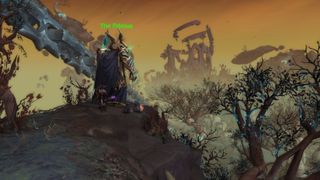
One of the main points of contention in the WoW community right now revolves around the story direction. There are multiple facets to this, but it has built up to a zenith with the end of Shadowlands, given the overarching plot that has been in development for several years at this point.
Blizzard had a fairly ambitious plan in place, which started out in Legion, or in some ways even earlier, where plot threads from multiple expansions would bleed into one another and overlap in a saga-like fashion. The plan was sound, but the execution hasn't been particularly great. A lot of the criticism has revolved around Sylvanas Windrunner, one of Warcraft's most iconic characters. Her character arc has been strange, to say the least, potentially made worse by comments Blizzard made in interviews that inflated expectations. Sylvanas had the Horde commit genocide of the elves, burning down their ancestral home of Teldrassil. The consequences of those actions haven't really manifested in any meaningful way, nor have her exact motivations. Some important context may appear in an upcoming book about Sylvanas, but ... that's outside of the game. Much of the confusion about the current story stems from the lack of context, and putting lore in external sources compounds the issue in my view.
This is just one example of many potential ones that lead to disengagement with the story at large, and disinterest in the wider lore. Shadowlands' big central antagonist, The Jailer, also has vague motivations, which end on a similarly vague, "There's an even scarier threat!" cliffhanger at the end of his story, with a banal soap-opera twang. The Jailer was Blizzard's attempt to create a fresh antagonist from its gallery of villains, but he was ultimately a near-direct copy of Sargeras, albeit using undead spirits as an army instead of demons, with a contradictory "killing us to save us" motivation.
Get the Windows Central Newsletter
All the latest news, reviews, and guides for Windows and Xbox diehards.
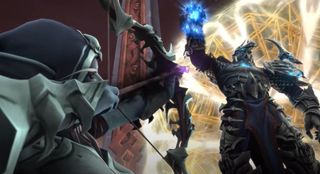
After Legion, which dealt with literal space travel and planet-sized enemies, I feel like World of Warcraft should have pulled back a bit from the cosmic-level threats. Battle for Azeroth started off relatively well in this regard, in my view, having us explore new lands, dealing with more local threats. It strangely rushed through its story too quickly, though, placing two major characters in N'Zoth and Azshara in subsequent raid tiers, both of whom had enough character build-up to arguably warrant their own expansions, as opposed to a single raid tier each.
I feel like World of Warcraft should have pulled back a bit from the cosmic-level threats.
Balancing big story ambitions with game development pipelines is by no means a simple feat, and I don't mean to suggest it is. Given the constraints Blizzard has had to work with in recent years, it's a wonder that they've achieved as much as they have. But, it has become more apparent than ever that there's a lack of conviction or forethought about some aspects of the story design. It also feels like Blizzard thinks players need increasingly powerful entities to fight to feel powerful themselves, leading to a strange Dragon Ball-like power creep. It's true that players have felled God-level threats in the game now, but I do feel like there's a sense of fatigue for apocalypse-level threats every few years.
Balancing gameplay needs with the story direction isn't easy, for sure, but more than ever it feels like some characters' story arcs were pulled in multiple directions, as they wrestled with the idea of hurting marketable characters. There are also very many aspects to the story that aren't really being given the attention they deserve too. How do characters not involved with the events of Shadowlands feel about the atrocities of Battle for Azeroth? Will that be dealt with, or conveniently forgotten, rather than having to ask tough questions of the game's characters? More often than not, it seems to be the latter. Battle for Azeroth got quite dark, and it made waves as a result. The Warbringers shorts were truly excellent. But if you're going to deal with those kinds of themes, you'd better give them the care and attention to handle them to their conclusion properly, and many of those plot threads feel underserved.
Itemization and endgame
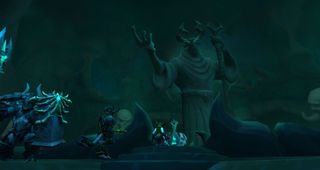
I wrote more about this in another article recently, where I argued WoW needed a change in philosophy. It does seem like they've begun to address this to some degree in the current Patch 9.2, which massively reduced the difficulty to climbing through some of the game's time-gating mechanics.
When Shadowlands launched, Covenants had an almost Battle Pass-like structure that showed you every reward you'd be able to unlock as you grinded Renown through the tiers. Covenants came with lots of cosmetic rewards, but also tangible power gains to some degree. The problem is, a lot of these power gains were gated on a weekly basis. Far too much of World of Warcraft revolves around its weekly reset, which gives you a reward chest for your gameplay across the week, while resetting other activities. This, I've argued, contributes to the feeling of WoW as a job, rather than a game, with little to do in the endgame that isn't tied to some form of time-gating.
As of 9.2, you can achieve maximum Renown in a few hours. It's hard to say whether that's simply because we're at the end of the expansion, or because Blizzard realized it was a bit of a failed experiment. Tying so much of the endgame to daily chores simply felt bad, and hopefully, Blizzard will continue to take some of these learnings into the next expansion, but that remains to be seen.
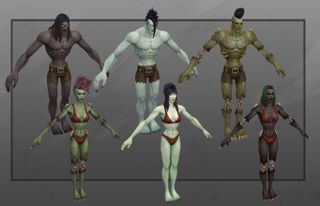
Another aspect of endgame that I feel has reduced in quality is itemization in general. The quality of the art assets used for gear has taken a hard nosedive in recent years. Blizzard effectively gave up offering unique armor sets for different classes until Patch 9.2, and the new sets it offers look incredibly basic compared to sets from tiers past. Bosses drop variations of the same items over and over, rather than anything vaguely cool or unique. Blizzard also has an entire system to customize spells, baked into the Inscription profession, but it is barely used.
Transmogrification, which lets you swap tier-appropriate stats onto a previously acquired armor design, seems to have given Blizzard the perfect excuse to not try to add new art for items. I feel like this shows a lack of investment in artists and developers who can make these kinds of assets, and it contributes to the feeling that raiding and dungoneering is just about chasing numbers, you know, like a job. The rewards in WoW have never felt less rewarding, and that's a problem for an MMO.
New player experience
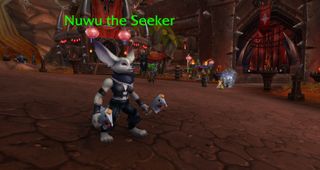
Speaking of low investment, this is probably the biggest ask of them all given that WoW seems to be more intent on cutting corners than doubling up on investment right now. The entirety of Azeroth needs another Cataclysm-style revamp.
The new player experience in WoW is abysmal. Even with the new Exile's Reach experience, which lets players skip past all the outdated content, it's still a poor experience overall, and feels more like a Band-Aid on a much broader problem. World of Warcraft isn't a world anymore, but an island. When you emerge from Exiles Reach, you go to one of the Battle for Azeroth islands, rather than into the broader Azerothian experience because Azeroth itself is utterly outdated, featuring content that a decade out of date. It doesn't fit neatly into the timeline, while prominently featuring characters that are very much dead in the current timeline.
World of Warcraft isn't a world anymore, but an island.
For World of Warcraft to live up to its name, Blizzard really needs to revamp the old world as the core leveling experience, with low-stakes enemies and local ongoing threats to battle, that won't be completely out of place with expansion storylines that typically take place in different areas. It should be designed in such a way that any major character appearances can be easily updated to reflect current timelines, and it should be designed to feel akin to that old-school WoW leveling experience where you feel like you're initially a soldier of the Horde or Alliance, rising through the ranks to eventually join elite raiding guilds battling more dangerous threats — on-ramping more seamlessly into the current expansion. Classic content should remain accessible via time walking for existing players, but new players deserve a better experience.
Blizzard's investment revolves entirely around placating the existing player base, with almost no attention paid whatsoever to growing the experience for new players. Graphics clearly aren't the issue, since low-detail games like Fortnite and Minecraft remain heavily popular. WoW's relatively simple art style is arguably a strength, given that you don't need the best gaming PC in the world to run it as a result. The problem is the experience in general, which feels stunted, broken, and anemic, designed to push players into the current expansion as quickly as possible to the detriment of actual enjoyment. Finding new players in WoW is incredibly hard these days, but it's incredibly important that they do access new players if the game is to survive — if indeed they want it to survive, and if it isn't simply in some kind of managed decline.
Cause for optimism
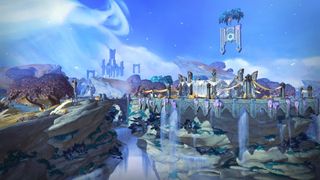
While WoW certainly has its problems (and this article only touches upon a few), I do think there's cause for optimism on some fronts lately. The new 9.2 patch offers powerful catch-up mechanics which makes gearing up alts and other specs far less grindy than before, and Season 4 coming in a few weeks promises to add Mythic+ raids, while expanding the pool of activities to do as we wait for the next expansion to start. Blizzard plans to announce the next iteration of the game this April, too, which is widely expected to revolve around Azeroth's dragon flights. It gives Blizzard a change to build a new story arc, and build on learnings from Shadowlands and Battle for Azeroth.
If Microsoft's acquisition of Activision Blizzard does go through, Xbox lead Phil Spencer has signaled intent to grow WoW in previous interviews, and help all Blizzard games become the best they can be. Xbox seems somewhat shielded from Microsoft's broader shareholder culture, which focuses on Microsoft's business ventures around Windows Azure and Microsoft 365 over gaming itself. Given the vast size of the Activision Blizzard acquisition, Microsoft will of course want to turn that investment into cash. They're a business like any other. But as a platformer holder across Xbox and Windows, Microsoft has different performance indicators for success than Activision Blizzard does, which should hopefully lead to a better culture for Blizzard and its games in general.
Ultimately, only time will tell how all of this pans out, but as a veteran WoW player who wants to see the game grow and improve, I sorely hope that the change of leadership at the broader corporate level will give us as Warcraft fans the game we deserve, and the game WoW clearly still has the potential to be.
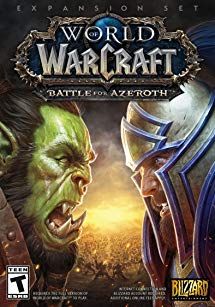
World of Warcraft goes to the afterlife
Despite all of the problems, WoW is still a fun game especially if you're playing with a dedicated group of friends. Dungeons at Mythic+ level and raids are still some of the best in the business, although WoW is nowhere near meeting its full potential as a game right now.

Jez Corden is the Executive Editor at Windows Central, focusing primarily on all things Xbox and gaming. Jez is known for breaking exclusive news and analysis as relates to the Microsoft ecosystem while being powered by tea. Follow on Twitter (X) and Threads, and listen to his XB2 Podcast, all about, you guessed it, Xbox!